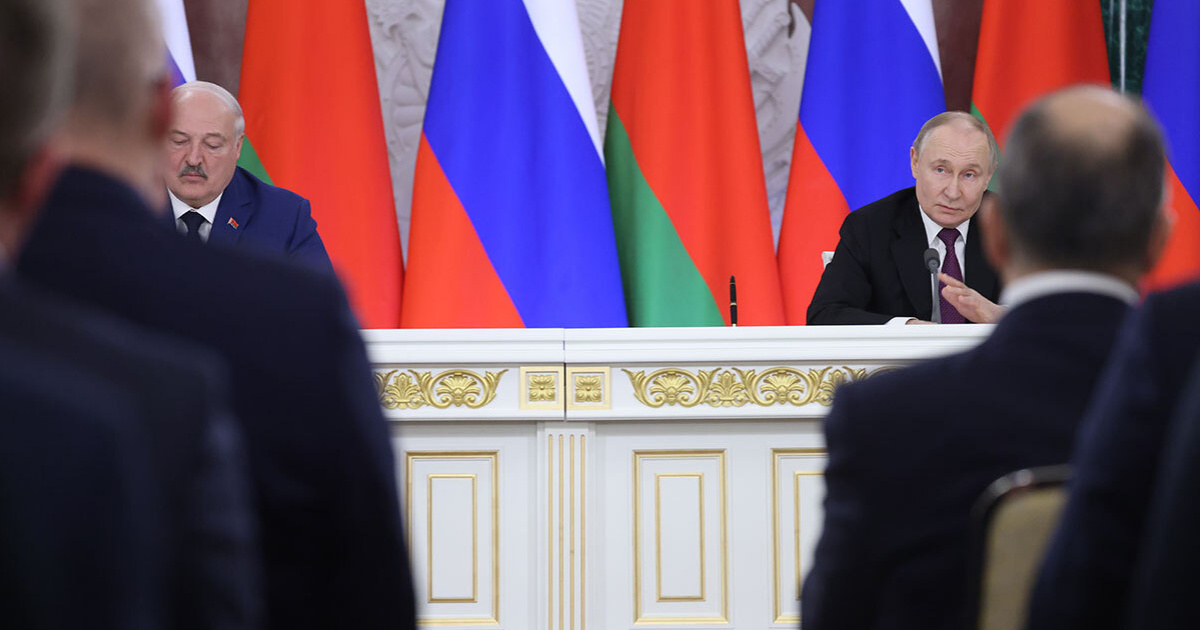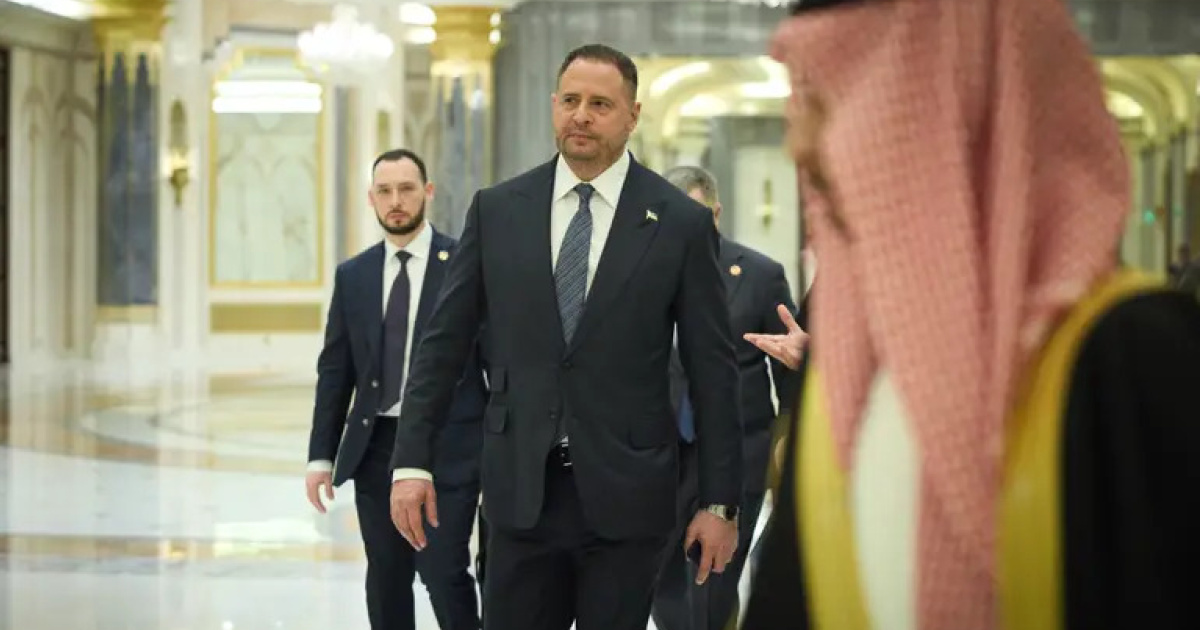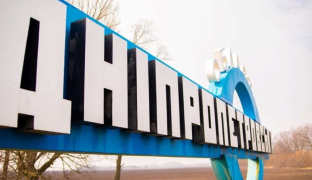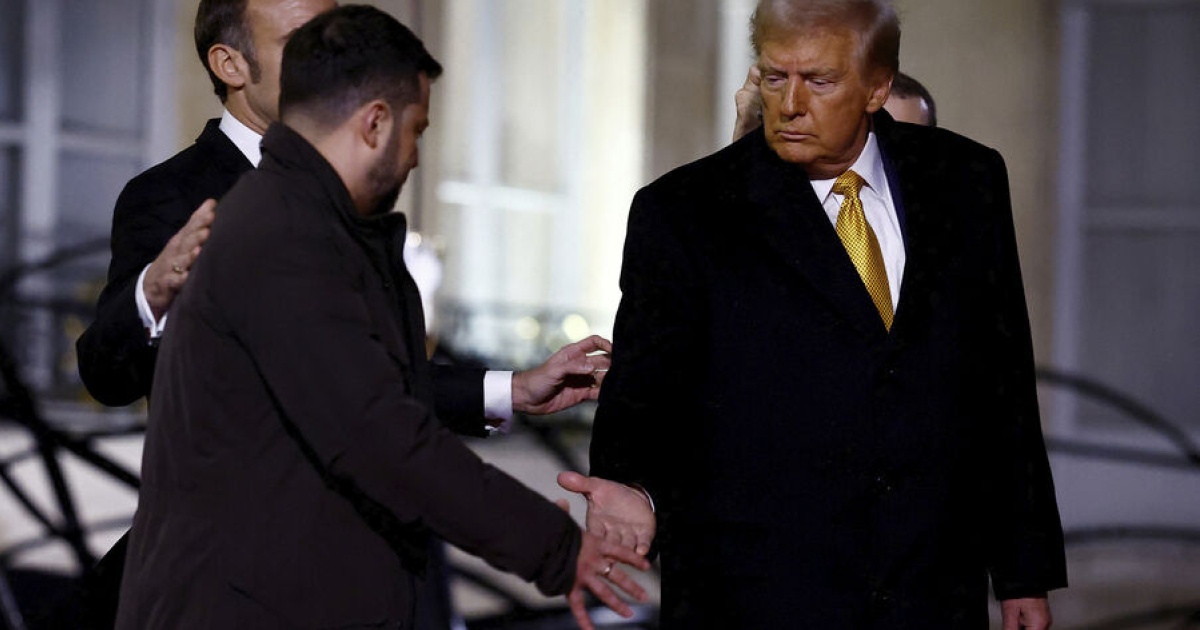In early September, the Armed Forces of Ukraine launched a long-awaited counteroffensive along almost the entire front line. The Ukrainian military liberated most of the Kharkiv oblast and forced russian forces to leave the strategically important settlements of Kupiansk and Izium. There are also certain successes of the AFU in the Luhansk, Donetsk, Zaporizhzhia, Mykolaiv and Kherson oblasts.
Today people are talking about the liberation of about 8 thousand square kilometers. The advance of the Ukrainian troops continues.
The Ministry of Defense of the russian federation, of course, did not admit defeat and announced a planned regrouping of its troops in the Balakliia and Izium areas to build up efforts in the Donetsk direction.
In an interview with OstroV, reserve Colonel, military expert Roman Svitan, told how the AFU counteroffensive might look like in the future, where we should expect another "regrouping" of russian troops in the near future and why the war will not end even with the liberation of Donbas and Crimea.

- What is happening at the front now?
- As a result of the counteroffensive, Ukrainian troops liberated most of the Kharkiv oblast. Nowadays, the front line there runs along the Oskil River and the Oskil reservoir. From a military point of view, the russian decision to withdraw from the Izium pocket to these lines was correct. They have occupied the line of defense behind the Oskil reservoir and are trying to prevent the Armed Forces of Ukraine from entering the left bank.
- Why is it so important?
- Crossing the Oskil River will give us the opportunity to go further into the operational area and liberate the entire Svatove bridgehead - it is quite simple for an offensive, there are no water barriers and other natural means for defense. In the event of getting to the other bank, we will be able to liberate this area in just a few days.
- Has Ukraine "agreed" to this new front line along the Oskil River?
- The water barrier is a line of defense by itself, as it is very difficult to cross it. Any crossing attempt will be immediately stopped by the enemy fire. Nobody will even try to do it. The Oskil reservoir is a natural line of defense used by russian troops to protect themselves from the AFU, which are now based at the Izium bridgehead.
There are two ways for the Ukrainian troops to move further and reach Svatove. The first option is to cross the Oskil River from the north, in the Kupiansk area. There is no reservoir there, only a rather narrow part of the river, which is not difficult to cross. We can head to Svatove from there.
The second option is to cross the Siverskyi Donets River from the side of Sloviansk, which has already been done (Sviatohirsk and several settlements on the left bank have been liberated). Ukrainian troops are already working on Lyman and then will be ready to move towards Svatove from Sloviansk to the east.
- That is, you can reach Svatove from two sides?
- Quite right. You can get to the Svatove bridgehead from two sides at the same time: from Kupiansk and from Lyman.
In addition, the AFU are conducting counter-offensive operations against Lysychansk from the Siversk direction. After the Izium bridgehead was liberated, the threat from the north disappeared. Sloviansk and Siversk are not pressed by the enemy from the north. Therefore, the Siversk grouping can easily begin moving along the Siverskyi Donets to Lysychansk. That is, the movement of Ukrainian troops can be simultaneous from both sides of the Siverskyi Donets River.
- Do I understand correctly that the Lysychansk pocket has been formed?
- Yes, Lysychansk is in the pocket situation, also due to the Siverskyi Donets River, which surrounds the city. Therefore, the Ukrainian troops will definitely liberate it. The features of the terrain and the water bodies contribute to this. I would say that the russians can also retreat on their own, since it will be very difficult to defend Lysychansk in such conditions.
- And what is the situation around Sievierodonetsk?
- The russians can hold the defense there, since it is located across the river. It will be held until our left-bank grouping liberates Rubizhne and starts to advance to Sievierodonetsk from the north.
- What is happening in the Bakhmut area?
- The russians are pushing very hard there. In addition, part of the troops that were withdrawn from Izium has now been relocated there. They need to seize Bakhmut to solve the water problem in Donetsk. This is a key city that prevents them from reaching the water intake, which is why they fight so hard there. They will continue to fight head-on there until they are finally driven off by our grouping, which will first liberate Lysychansk, then will get to the south and cut off the Popasna grouping. Then they will calm down and retreat from the Bakhmut area.
- Why do they continue to fight for Bakhmut, and do not use their forces to contain the Ukrainian counteroffensive?
- As soon as they leave Bakhmut, we will immediately make them retreat as far as Popasna, and they will no longer be able to approach this city. Without taking control of a water intake in the Bakhmut area, the presence of russian troops there is pointless. They either fight for Bakhmut and the water intake, or they must retreat to the Luhansk oblast.
- Are the russians able to seize Bakhmut?
- No, they do not stand a chance. To do this, they need to throw there the entire army that is in Ukraine. If they concentrate a 100 thousand- strong grouping there (per 100 km of the front), there will be some chance. At the moment they are just hitting one point there, but there is no progress. Bakhmut is a fortress itself, it is difficult to seize it.
The russian troops will face problems in the Bakhmut area when the Armed Forces of Ukraine soon liberate Lysychansk and begin to advance into the Popasna grouping.
By the way, their problems will begin in the nearest future, since the Popasna grouping was provided from Kupiansk. All shells and ammunition went through Kupiansk, which is now under our control. The supply of shells will be minimized. It is possible to switch to delivery from the Donetsk direction, but then it will reduce the number of shells in Donetsk.
- Is there also fighting in the Donetsk area?
- The russian troops have the task of moving the front line away from Donetsk by at least 30 km so that the Armed Forces of Ukraine do not reach the city. Now we are situated about 10 km from Donetsk. From a military point of view, this is the right decision of the russians. But from the point of view of implementation, this is an unrealistic task.
- Is there a movement of the Ukrainian army towards Donetsk, which russian Telegram channels often report of?
- There is no movement itself, there are some of our counter-offensive actions that stop their offensive actions. There is constant fuss, but there is no progress. Indeed, Ukrainian troops are accumulating in the area of Vuhledar, Pokrovsk and Kurakhove. But they can be used there as a reserve to reinforce our troops towards Bakhmut, towards Huliaipole-Orikhove (Zaporizhzhia direction) or there can be an independent movement towards Olenivka in the Mariupol direction. That is, this is a place where you can gather troops to go to any of these points. I think that all these options have been worked out by our General Staff.
- Which of these options can be used?
- Only our Commander-in-Chief Valerii Zaluzhnyi knows this. Those options are correct from the point of view of military science, and time will tell which one will be chosen. This is the military plan of our army.
- What is happening in the Zaporizhzhia direction?
- The russians say that there are concentrations of Ukrainian troops in the Huliaipole-Orikhove-Vasylivka triangle. If this is true, it is a very intelligent move from a military point of view. And if they are further strengthened by our grouping from Vuhledar, we will be able to see a very good situation for Melitopol. The russians are really afraid of this, so they are gathering their forces in the Vasylivka-Polohy-Tokmak area in order to protect Melitopol from the north from a possible offensive of our troops (if, of course, Zaluzhnyi makes such a decision).
- Why are the russians so afraid of losing Melitopol?
- For them, Melitopol has the same strategic importance as Kupiansk. If our troops reach Melitopol, then we will cut the southern russian grouping into two parts, and the entire front will collapse. In this case, the right-bank group will be in such a position that they will have nowhere to run.
- How realistic is it to liberate Melitopol?
- There is a distance of 100 km, which are two tank crossings. Therefore, we are able to reach Melitopol in two days. That's why they gather their troops there to keep us from advancing.
- What is happening on the Kherson front?
- Our troops hold the front line there under tight fire control. The number of russian troops almost doubled due to the ones that were transferred from the Izium direction. They all are under our fire control. They are cornered between our front and the Dnipro River - this is a very bad situation for them.
- And they are not going to leave...
- Yes, and it is very interesting. This suggests that they were given a political task, not a military one. Some ammunition is transferred there by boats, barges and everything that can swim, and they are ordered to stay on the right bank. But this ammunition is not nearly enough, and someday it will all end.
- When?
- I think that in three or four weeks, they will use up all the supplies. When the tank runs out of diesel and cannot move, it will be a good target for our Bayraktar.
- That is, Ukraine can wait for another "regrouping"?
- Of course. But we are not just waiting; Ukraine is still conducting counter-offensive operations there. We are gradually pushing them out. For example, we are developing a very good bridgehead towards Beryslav. And if we get to Beryslav, the russians will be in trouble, because they will be cornered by the 10 km wide Kakhovka reservoir.
In addition, there is a fairly successful movement of the Armed Forces of Ukraine from Mykolaiv to Kherson. Every day our troops take back several kilometers. Of course, the advance there is not as impressive as in the Izium area, but the tasks are being completed, and we are getting closer to Kherson.
- That is, nowadays the Ukrainian counteroffensive is going on along the entire front line?
- That's right. And this is the right tactic. We press where it bends, and we go forward where it breaks. Within a week, we will hear about the same problems the russians had with Izium. The front line will break somewhere again, and we will advance into this gap with the transfer of reserves.
- When will this counteroffensive stop?
- The counteroffensive will continue up to reaching the 1991 borders with varying degrees of intensity. Nobody will stop.
- What will the intensity depend on?
- It will depend on the number of the supplied ammunition and, possibly, weather conditions. During the rainy season, when it is very inconvenient to move across the fields, our wheeled self-propelled guns and HIMARS will operate and fire at the russians. Same goes for our aviation and Bayraktars. And if the weather is good, then the intensity of advancement will be higher.
Now the weather is in our favor because we are advancing and we do not have to dig trenches, but the russians cannot do so. They start trenching around and it starts to pour. This kind of weather does not allow them to dig in, which is why the degree of destruction of russian troops increases.
In general, no one is going to stop. We will continue to push forward. Nothing prevents us from doing so.
- And what about the respite?
- There is a planned withdrawal of troops. We are not using the same military units. They are being withdrawn, re-staffed, rested and re-sent to the front line. There is a constant rotation mechanism. Nothing prevents us from going further and liberating Ukraine up to the 1991 borders, including Crimea and Donbas. Most likely, Donbas will be the first liberated region. It seems to me that our troops are up to something in the Donetsk area.
I still think that we can enter Donetsk without any problems. Any grouping that enters the city will be backed up by our artillery.
- What will the russian federation answer with? I think there are smart generals out there who are aware of that...
- There are smart generals who told putin that this was a military venture in its purest form. Crossing to the right bank without moving forward is a military venture, any major will tell you that. You cannot stay in the pocket situation for a long time. Any normal military leader would withdraw troops to the left bank, but this is not happening, because putin gave a clear command to stay there to the end. And there are many such situations along the entire front line.
In the same Crimea, it makes sense to stay there and defend it only if there is a Crimean bridge. If the bridge is destroyed, then a military venture will begin.
- If russia suddenly transfers all its troops located in Ukraine to Donbas, will they be able to keep this region?
- They will no longer be able to seize the Donetsk and Luhansk oblasts within the administrative borders, but they will be able to hold on to what they have already occupied for some time.
The only thing the russians can do in response to our counteroffensive is to fire missiles.
- That is, no more military "surprises" from the russians should be expected?
- I do not see such an opportunity. For now, they can only retreat.
- Can the announcement of general mobilization in the russian federation somehow change the situation?
- I do not think so. They should supply all the conscripts with uniform, food, weapons, some equipment, and all of that is already lacking now. The mobilization will only increase cannon fodder for our artillery. From a military point of view, mobilization will not bring them any success on the front line. It is the war of equipment, not the manpower.
- Can these newly mobilized soldiers be sent to Ukraine from the Belarus direction to divert our attention?
- What is the point? Our combat units are stationed there. As soon as inexperienced fighters enter the area, they will immediately be destroyed. Belarus itself will definitely not participate in the war. In addition, even if mobilization is announced today, the conscripts will get to the front in at least three months.
- What success can the AFU achieve by the end of the year?
- If Western partners give us enough weapons (about twice as much as now), then by the end of the year we can reach the borders of Ukraine as of 1991. But only if we are supplied with the requested weapons, including aviation.
When we liberate all our territories, we must urgently start negotiations on joining NATO. Otherwise, there will be no point in liberating all the territories, because russia will regroup and will attack us again in the spring. They are afraid only of NATO.
- The AFU Commander-in-Chief Valerii Zaluzhnyi in a recent interview said that the war will not end even after the de-occupation of Crimea. Do you agree with this?
- Yes, that is exactly what I mean. The war will not end with the liberation of Crimea. Russia will keep banging on our door until we put a NATO lock on it. All these "security guarantee" treaties will not solve the problem. The best option is to join NATO like Sweden and Finland did (without any MAPs). When we join NATO, no one will ask politicians whether to give us weapons or not, the fifth article will be enforced. The whole point of joining NATO is access the full range of weapons of member countries, including nuclear weapons. There are no other options.
- How will the situation develop if Western partners do not increase the supply of weapons?
- Then the war will drag on for another few months until spring. But it is better to end the war till winter comes in order to rebuild our cities. There are opportunities for that.
Vladyslav Bulatchik, OstroV




